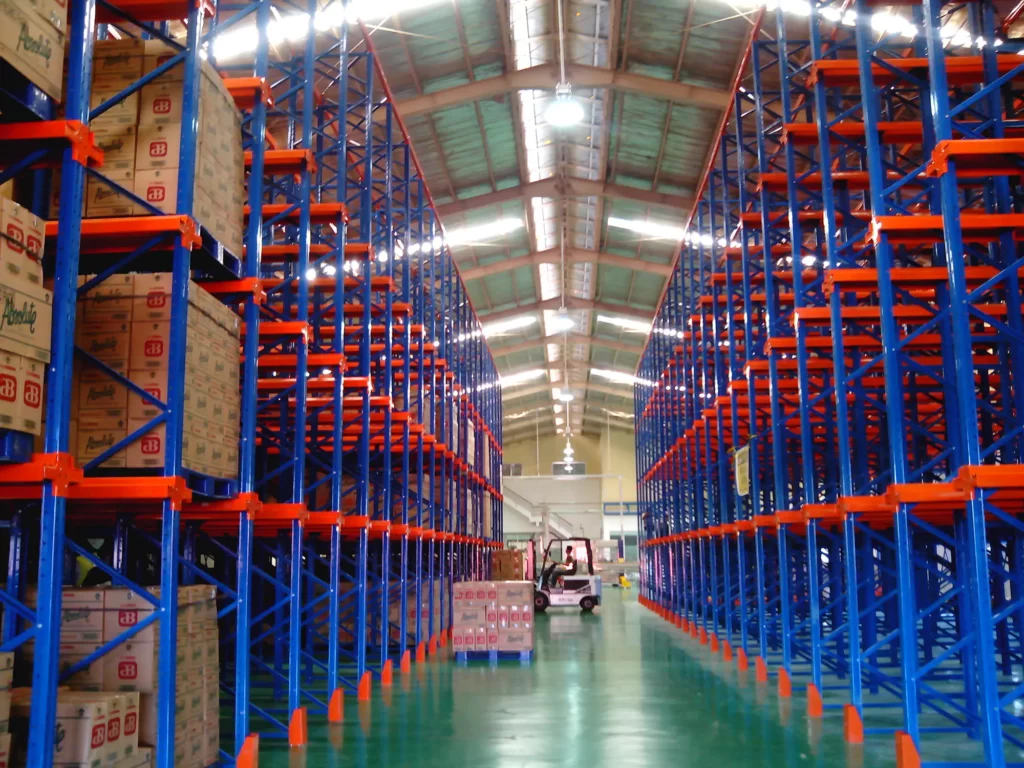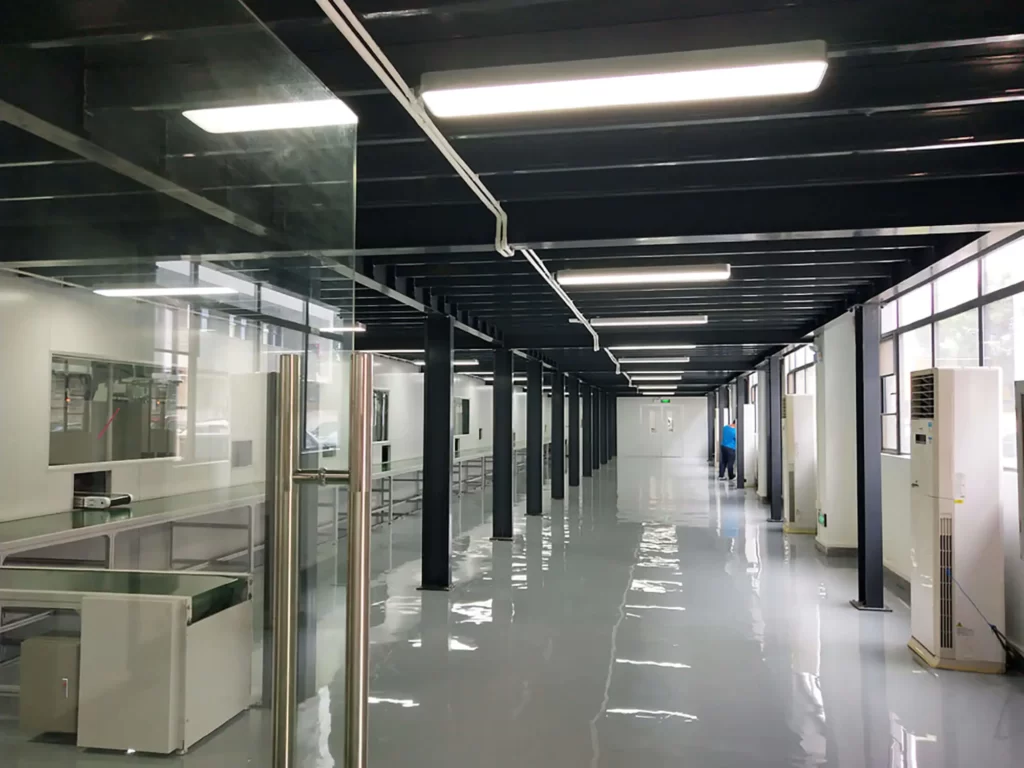Smart warehouses are changing the way storage and inventory management are done. They use robots, computers, and sensors to make work faster and more precise. But what is the secret behind their efficiency?
In this article, you’ll take a look at how these technologies enhance productivity, the challenges companies encounter, and the potential future of smart warehousing.
Figure 1: Smart Warehousing
1) What Is Smart Warehousing?
In basic words, smart warehousing is the use of technology in a modern way in the processes of warehousing to improve the operations in a warehouse with regard to speed and ease of work.
In the present age, smart warehouses utilize robots for box transportation, sensors for tracking item placements, and computers for stock level monitoring, along with scheduling automation, thus eliminating the need for manual labor.

Figure 2: Smart Warehousing Advancement
2) Key Technologies in Smart Warehousing
Smart warehouses utilize unique tools and machines to enhance operations. Now we will look at the main tools used in smart warehouses:
i) Internet of Things (IoT)
First of all, the Internet of Things means almost everything in a warehouse is connected to the Internet. For instance, tiny sensors are located on boxes and shelves. Such a sensor can monitor the location of the boxes, the count of the boxes, or whether the room is hot or cold.
Now, due to this advancement, workers no longer need to check everything manually; they only need to check a screen.
Figure 3: Internet of Things
ii) Artificial Intelligence (AI)
Moving on, AI is seen to be an advanced computing system. In the context of the warehouse, it helps in making effective decisions by scanning mountains of data. For example, AI can predict which items might be required in the future, or assist in optimizing the arrangement of steps for efficient space saving.
AI continually learns over time, improving your effectiveness with every task I complete.
Figure 4: Artificial Intelligence
iii) Robots
Other smart technologies that can be found in a smart warehouse are robots. Bots assist in the transportation and handling of cargo. Some robots can pick up boxes, while others can independently navigate the premises.
As a result, heavy objects do not have to be lifted manually, which increases productivity and workplace safety.
Figure 5: Robots
iv) Warehouse Management System (WMS)
In addition, automated warehouses rely on a software application called WMS, which stands for Warehouse Management System. WMS helps in tracking and recording components, their locations, as well as items that need to be packed and or shipped.
As a result, the warehouse is kept organized and clean.
Figure 6: Warehouse Management System
v) Computing Cloud
Cloud computing refers to storing a warehouse data as files on the internet-based ‘cloud’. Thus, employees and superiors can get important data from any place and through different devices, including phones and laptops.
This improves intra-employee coordination and collaboration, and productivity within an organization.
Figure 7: Cloud Computing
3) Benefits of Smart Warehousing
There are numerous advantages that smart warehouses offer to a business. In this section, we will discuss the most important benefits of smart warehousing:
Figure 8: Benefits of Smart Warehousing
+ Improved Accuracy and Efficiency: Most importantly, technologies like sensors, machines, and robots help in reducing operational errors. For example, AI-maintained systems guarantee that all records are applied accurately, and robots can lift and move items with utmost precision.
Ensuring accuracy in warehouse operations facilitates operational efficiency, which economizes time and effort.
+ Reduced Labor Costs and Human Error: An additional key advantage is that automated warehouses operate with lower labor costs for the same functions. As a result of the work being done by automated systems, businesses are able to reduce their expenditure on employee compensation.
Moreover, mistakes are reduced because, unlike humans, machines do not get tired; they do not make blunders.
+ Real-Time Inventory Visibility: Smart warehouses tell you the location of every item in the warehouse and use Technology to ‘Smart’ label them as such. This enables supervisors to monitor inventory levels, movement of items, and immediately identify restock requirements.
This helps companies with faster decision-making and in avoiding depletion of critical products.
+ Fast Shipping and Delivery: Another big advantage is faster order pick and pack shipping. For example, items can be effortlessly retrieved and packed by robots, thereby hastening the procedure. Because of this, orders are received fast, which satisfies them and aids business expansion.
+ Better Flexibility: Last but not least, smart warehouses are much simpler to grow or modify as needed. For example, if a company grows, the technology is able to handle more products with minimal increases in labor expenses. This enables companies to deal with coming-out problems or larger orders successfully.
Andrew from Quora said that automation robotics in warehousing makes work smoother, performing jobs such as picking, packing, and classifying. He explained that this boosts efficiency, lowers labor costs, improves accuracy, and speeds up order delivery. According to him, it also helps the supply chain become more flexible and quick to respond.
Figure 9: Quora Review
4) Issues and Their Corresponding Answers with Regards to Smart Warehousing
Though smart warehousing offers advantages, some hurdles have to be overcome before implementation. Here we will discuss a few issues and their answers:
? Large Upfront Cost
The primary point is that advance machinery can be very expensive upfront. Purchasing machines, robots, computers, along with other smart tools, can be excessively expensive. Though this amount is quite expensive at the moment, it will pay off in the long run, so consider it a form of investment.
Over time, smart warehouses increase their ROI by improving their operational speeds, decreasing errors, and requiring less manpower.
? Working With Current Systems
A further complication is joining advanced machinery with systems that are already in place in the warehouse. In some cases, the new devices do not interface well with the components used previously.
To solve it, businesses could work with professionals who specialize in making the system integration smoother. This way, all systems can work with each other in harmony.
? Gaps in Information and Required Training
Then, the employees might not know how to operate the new smart machines and software. For this reason, companies are required to provide guidance sessions for their workers. Workers can learn new skills and have trust in their ability to put the skills to use with appropriate training.
Figure 10: Gaps in Information and Required Training
? Data Security Risks
At last, smart warehouses hold a great deal of data, and that information must be safe. For instance, if someone hacks the system, important data can be stolen. To defend this, organizations need to secure their information using powerful sign-ins, networks, and updates.
5) Future Directions of Development in Smart Warehousing
Smart warehouses are changing and advancing with the changing technology. Now we will discuss the expected developments:
a) Applications of Drones and Self-Driving Cars
First of all, companies will begin making use of more drones and self-driving cars for warehouses. A good example would be that drones can survey a certain area to confirm whether an item is stored in the appropriate location. At the same time, small self-driving transport vehicles can move items between locations.
This indicates that the work is done in a timely manner and requires little effort from the workers.
Figure 11: Applications of Drones and Self-Driving Cars
b) AI-Driven Predictive Maintenance
One more smart innovation is employing the gaze of AI for monitoring, which automates problem-solving and allows issues to be tackled before they arise. This is known as maintenance done as a guess. For example, if a robotic system starts producing abnormal sounds, AI can inform the team so they can take a look.
In turn, there is an increase in productivity because machine downtimes are reduced.
c) Greater Use of Digital Twins and Simulation Modeling
Now, some warehouses will implement something known as a digital twin. Think of it as having a mirror image of a warehouse on a computer. Through this simulation, Managers can strategize or evaluate concepts without actually halting live work. This technology optimizes decision-making while mitigating errors.
Figure 12: Use of Digital Twins
d) Sustainability Integration
The upcoming smart warehouses will have additional eco-friendly characteristics. For example, they will facilitate the use of energy-efficient lighting, advanced cooling systems, and solar panels. This way, warehouses can decrease their operating costs and improve their environmental impact.
Conclusion
In a nutshell, Smart warehousing improves the organization and movements of items. Advanced machinery like robots and computers, is highly utilized. This speeds up and simplifies the duty. Furthermore, it minimizes human mistakes.
Although there are certain issues, solutions are available. In the years to come, smart warehouses will significantly upgrade. Smart warehouses will help companies greatly cut costs and save time while also performing superbly.








